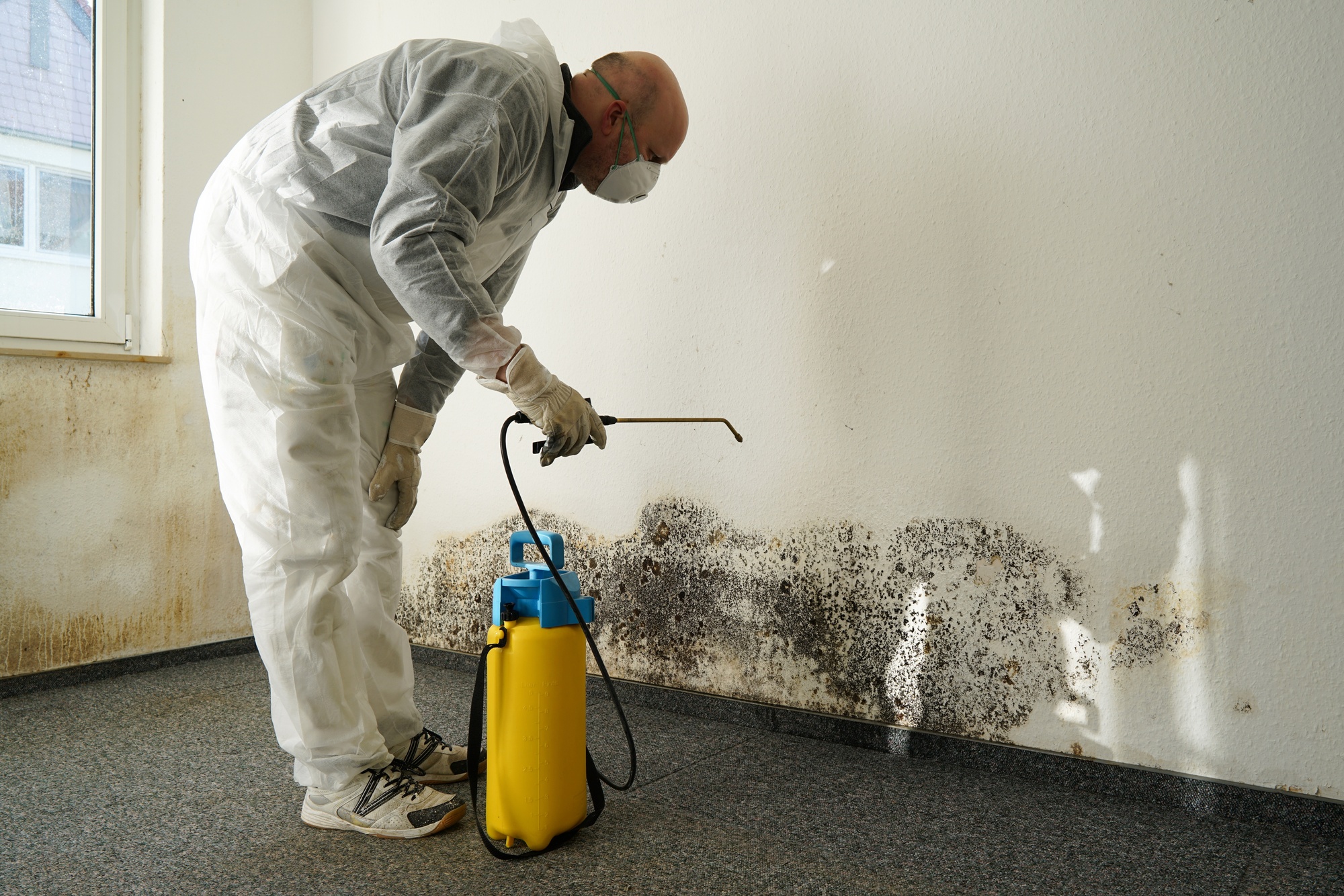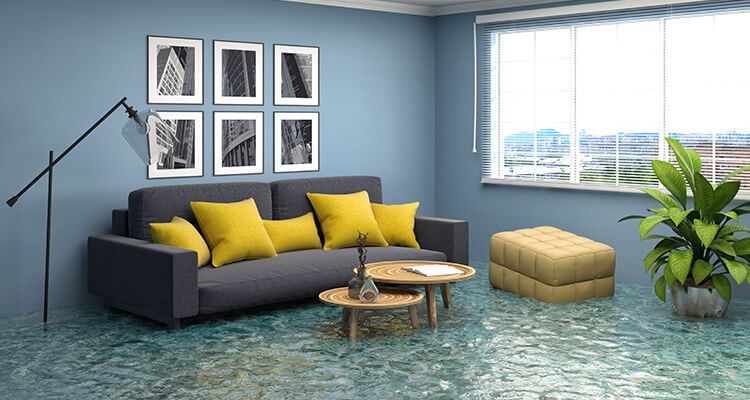A beginner’s guide to understanding Water Damage Restoration
Top Tips for Effective Water Damage Restoration: Protect Your Building Today
Water damage can strike all of a sudden, creating substantial disturbance and prospective threats. Efficient repair calls for a systematic technique to decrease further injury. From reviewing the damage to executing precautionary steps, each step plays a vital duty in guarding building. Recognizing these techniques can make all the distinction in the results of a water-related situation - Water Damage Restoration. What essential activities should be focused on to ensure extensive protection?
Analyze the Damage Immediately
When a water damage occasion happens, it is necessary to analyze the damage right away to mitigate more problems. This initial examination assists establish the degree of the damage and recognizes impacted locations. Water can leak right into walls, floors, and furnishings, resulting in mold and mildew growth and architectural instability otherwise attended to promptly. A detailed evaluation should include examining for discoloration, moisture, and stuffy odors, which suggest dampness presence - Flood Cleanup Services. It is also crucial to record the damage through photos and notes for insurance policy purposes. Engaging experts for a much more in-depth assessment may be essential, especially when handling considerable or hidden damage. Early acknowledgment and exact assessment lay the structure for effective repair and protect the property from extra problems
Shut down the Water System
Shutting down the water is an important action in avoiding additional damage throughout a water-related incident. When a leak or flood happens, prompt action is essential to minimize the level of the damage. Situating the major water shut-off shutoff must be a top priority. This shutoff is commonly located near the water meter or where the water line goes into the building. As soon as situated, transforming the valve clockwise will quit the circulation of water. In situations where the primary shutoff is hard to reach, private shut-off valves for appliances may additionally be made use of. Immediately shutting off the supply of water not only shields the residential property from added harm but also facilitates the succeeding repair process, making sure that healing efforts can begin without hold-up.
Get Rid Of Excess Water Without Delay
Eliminating excess water promptly is important for decreasing damage and stopping mold development in impacted areas. The longer water stays in contact with products such as drywall, insulation, and timber, the greater the danger of structural damage and the advancement of mold. Home owners ought to act promptly to evaluate the scenario and use ideal tools, such as damp vacuum cleaners or pumps, to draw out standing water successfully. If the volume of water is substantial, getting in touch with specialist remediation solutions might be required, as they can give specialized devices and know-how. Additionally, eliminating furnishings and personal belongings from the affected area can assist to lower damage and help with the total remediation process. Prompt activity not only safeguards property but likewise help in a smoother recuperation journey.

Dry Out the Affected Location
After getting rid of excess water, it is vital to dry the afflicted area extensively. This entails removing any standing water and boosting air flow to facilitate dissipation. Reliable drying out will certainly help stop mold and mildew development and additional damage.
Get Rid Of Standing Water
Promptly attending to standing water is critical for effective water damage restoration. The presence of stationary water can result in further residential or commercial property damage and create an atmosphere for mold and mildew growth. To alleviate these risks, it is important to remove standing water as promptly as possible. This procedure usually involves utilizing submersible pumps, damp vacuum cleaners, or specialized extraction tools. Experts recommend examining the deepness and degree of the water before choosing the ideal method for removal. Safety and security precautions ought to additionally be taken, consisting of putting on safety gear and ensuring electrical power is switched off in influenced areas. When the standing water is properly gotten rid of, the drying out process can begin, further protecting the property from ongoing damage.
Increase Air Blood Circulation
Enhancing air circulation is vital for properly drying locations influenced by water damage - Water Damage Restoration. This process aids to accelerate dissipation, minimizing the threat of mold and mildew and mold development. Experts commonly advise making use of fans to develop a constant air movement throughout the room. Putting box followers in windows can reel in fresh air, while high-velocity fans can direct air movement in the direction of damp surfaces. Additionally, opening up windows and doors permits cross-ventilation, enhancing the drying process. Dehumidifiers can also be employed to remove excess moisture from the air, further aiding in drying. By ensuring that air circulates openly, homeowner can Water Damage Restoration greatly minimize the long-term effects of water damage and protect the integrity of their framework
Evaluate for Mold Development

Mold growth is a serious problem complying with water damage, as it can lead to wellness concerns and structural deterioration. After any kind of flooding or leaks, it is crucial to carry out a comprehensive examination of the impacted locations. This includes monitoring concealed spaces such as behind wall surfaces, under carpets, and in basements or attic rooms where moisture may stick around. Indications of mold and mildew include a stuffy odor, staining on surface areas, or visible development. Residential or commercial property proprietors need to use safety equipment when checking, as mold and mildew spores can pose health and wellness risks. Water Damage Restoration. If mold and mildew is discovered, it is vital to address it quickly, as delaying remediation can exacerbate the trouble and raise the risk of major health issues for owners. Early intervention is key to reliable mold and mildew monitoring
Repair Work and Recover Broken Frameworks
When attending to water damage, it is vital to very first examine the structural honesty of the affected locations. This evaluation assists identify possible threats and notifies the required repair work approaches. Water Damage Restoration. Engaging specialist remediation services ensures that the repair procedure is performed securely and properly
Assess Structural Integrity First
Before initiating any type of water damage remediation, it is essential to examine the architectural stability of the affected area. This assessment assists determine any jeopardized aspects, such as wall surfaces, beam of lights, or foundations, which may posture security threats. Evaluating for indications of bending, breaking, or mold and mildew growth is critical, as these signs can reveal underlying damage that needs immediate interest. Additionally, comprehending the extent of the damage can assist restoration efforts and determine whether repair work are feasible or if replacement is essential - Water Damage Restoration. It is necessary to record findings completely, as this details can be important for insurance policy claims or future recommendation. Focusing on structural analysis warranties that remediation initiatives continue securely and efficiently, eventually shielding the residential property and its owners
Use Specialist Restoration Services

Stop Future Water Damage
To efficiently stop future water damage, homeowners have to embrace an aggressive technique to repair and maintenance. Normal assessment of roofing systems, gutters, and downspouts is crucial; clogged gutters can lead to water overflow and roof leaks. Additionally, looking for leakages in plumbing fixtures and appliances can ward off prospective damage. Property owners ought to also consider installing sump pumps in cellars or low-lying locations to handle water build-up. Sealing splits in structures and making sure appropriate drain around the building are important steps in securing versus water intrusion. Additionally, preserving moisture degrees with dehumidifiers can protect against mold growth. By executing these preventative steps, property owners can considerably lower the danger of water damage and shield their property for the long term.
When a water damage event occurs, it is vital to examine the damage promptly to mitigate further problems. Eliminating excess water immediately is essential for reducing damage and avoiding mold and mildew growth in impacted locations. Quickly resolving standing water is important for effective water damage remediation. The visibility of stagnant water can lead to additional residential or commercial property damage and develop an environment favorable to mold and mildew growth. Before launching any water damage repair, it is essential to evaluate the architectural honesty of the affected area.